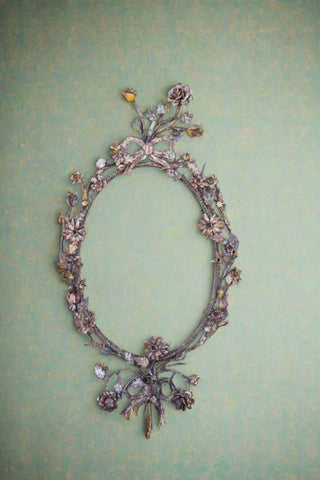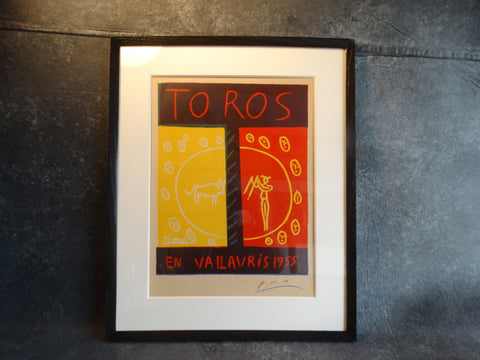Pablo PIcasso Soneto VIII (aquatint and etching) P2180
PIcasso soneto (sonnet) #VIII. Original aquatint (sugar lift) in black ink. February 1947. Printed at the Studio of Roger Lacourière, Paris 1947. The issued edition was a total of 276 impressions on various papers printed in 1948. Sy Litvinov, collector. 11 x 15.5
Master Spanish painter and sculptor Pablo Picasso is arguably the greatest artist of the twentieth century. He is best known as the co-founder, along with George Braque, of cubism, though his achievements reach far beyond that movement, as there was scarcely a 20th century movement that he didn't inspire or contribute to. As the first artist to enjoy the attention of mass media, his restless changing of style and love of controversy projected him into genuine superstardom, perhaps never to be surpassed again in the art world.
Picasso was born in Malaga, Spain to a middle class family. His father was a painter and a professor of art at the School of Fine Arts. It was from him that Picasso learned the basics of art training. Although he attended art schools throughout his childhood, he never received a formal degree after leaving the Academy of Fine Arts in Madrid after one year of study.
Picasso's early works are known as the Blue and Rose periods, so called for the color tones in which they are rendered. With their wistful elongated figures of Spanish and French life, they are examples of late 19th century Symbolism.
In the summer of 1906, during Picasso's stay in Gosol, Spain, his work entered a new phase, marked by the influence of Greek, Iverian, and African art. It was at this time that he produced one of his most important works, Les demoiselles d'Avingnon. The work appears to have a surface of fractured glass, destroying spatial depth and the classic form of the female nude, rendering it in harsh, angular planes. This work ushered in a critical turning point in modern art. Along with the French artist Georges Braque, he created a style which broke down and analyzed form, fracturing it into 'little cubes', ushering in the age of cubism. It proved to be the most influential movement of the early twentieth century.
As if to distance himself from his imitators, Picasso then went to the opposite extreme of embracing the classical past. He expressed a renewed interest in drawing and figural representation. He became increasingly interested in sculpture and was involved to a certain degree with the Surrealists. In 1932, with large exhibitions at the Galeries Georges Petit, Paris, and the Kunsthaus Zurich, and the publication of the first volume of Christian Zervos?s catalogue raisonne, Picasso?s fame increased markedly.
In 1936, Picasso painted Guernica, one of his greatest works. He was inspired to paint it after the bombing of the Basque town of Guernica by the Germans. Completed in less than two months, the enormous work expresses Picasso's outrage by employing such imagery as a fallen warrior and a mother and dead child. Despite the complexity of its symbolism, and the impossibility of definitive interpretation, Guernica makes an overwhelming impact in its portrayal of the horrors of war.
In the decades following World War II, Picasso continued to produce paintings and prints of considerable power, always remaining relevant and influential. He died in 1973 at the age of 91, having earned a level of world wide fame and admiration that no other modern artist has achieved.













